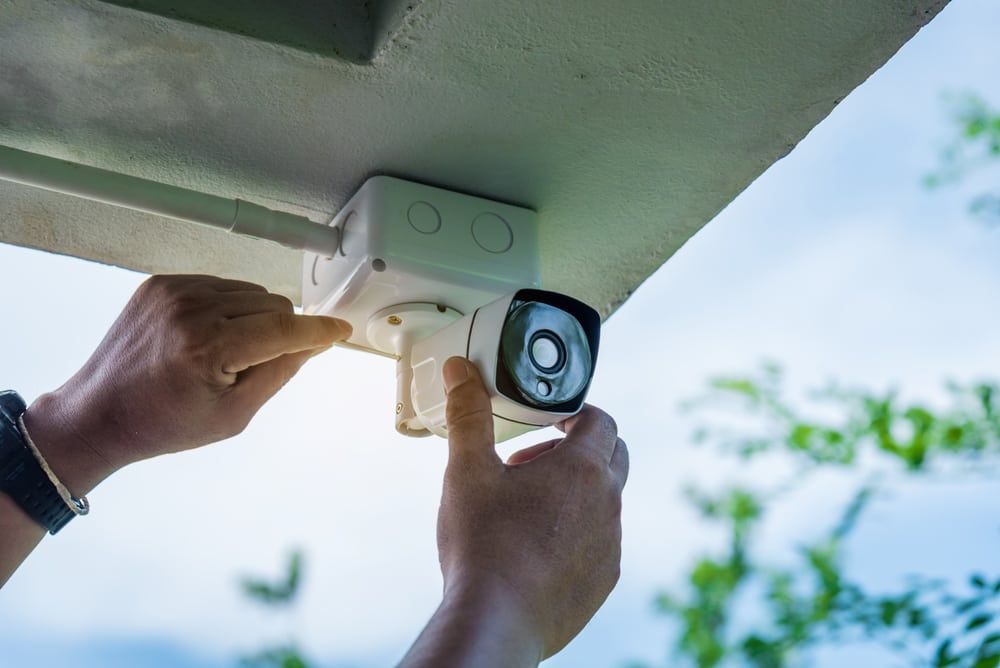
Overview
The CCTV technician course is a training program that teaches you how to work with CCTV cameras. You’ll learn how to install, fix, and take care of these cameras. It’s a great course for people who want to work in the security or technology fields. After finishing the course, you can find jobs at companies that use CCTV systems or work as freelance technicians. It’s an exciting opportunity to learn practical skills and enter a growing industry.
Introduction
CCTV Technician Course We will learn about this course.
- Comprehensive training in CCTV system installation, configuration, and maintenance.
- What is CCTV? And how it uses
- Hands-on experience in handling CCTV equipment and troubleshooting common issues.
- What is the camera?
- Understanding of CCTV system components, including cameras, recorders, and monitors.
- Types of CCTV Cameras
- Exploration of video surveillance technology advancements and industry trends.
- Knowledge of network setup and integration for seamless CCTV system operation.
- Emphasis on security and privacy considerations in CCTV installation.
- Training in mobile and remote viewing applications for convenient access to surveillance footage.
- Practical guidance on effective surveillance camera placement strategies.
- Instruction in cable management and wiring techniques for a neat and efficient system setup.
- Insight into recording and storage solutions to ensure efficient video retention and retrieval.
- Best practices in CCTV system design to optimize system performance and functionality
Comprehensive program
The CCTV technician course is a comprehensive training program designed to equip individuals with the essential skills and knowledge required to excel in the field of CCTV installation and maintenance. This course provides a solid foundation for understanding CCTV systems, their components, and the technical aspects of their installation.
Participants will learn about the latest advancements in video surveillance technology, network integration, and remote viewing applications. They will gain practical experience in handling CCTV equipment, troubleshooting common issues, and ensuring optimal system performance.
The course also emphasizes important considerations such as security, privacy, and compliance with legal and ethical standards. Graduates of the CCTV technician course will be well-prepared to pursue rewarding career opportunities in the security industry, working with organizations, businesses, and individuals to enhance safety and protect valuable assets. In just a short duration, this course equips students with the skills necessary to become competent CCTV technicians, ready to contribute to the ever-growing demand for effective surveillance solutions.
You can learn this in this course Let’s read it more.
1. Installation and Configuration Techniques
- Proper camera placement is essential for optimal coverage and surveillance effectiveness.
- Installation of cameras, recorders, monitors, and cables according to industry standards.
- Configuration of camera settings, video recording parameters, and motion detection.
- Integration of CCTV systems with existing networks for seamless communication.
- Setup of remote viewing capabilities for convenient access to surveillance footage.
- Testing and troubleshooting of CCTV system components and connections.
- Utilization of proper tools and equipment for installation and configuration tasks.
- Compliance with safety guidelines during installation to ensure system integrity.
- Calibration of cameras and adjustment of image quality for optimal performance.
- Documentation of installation and configuration processes for future reference and maintenance
This module focuses on equipping participants with the necessary skills to install and configure CCTV systems effectively. Students will gain hands-on experience in setting up various components of a CCTV system, including cameras, recorders, monitors, and cables.
Through practical exercises and demonstrations, participants will learn about camera placement strategies, ensuring optimal coverage and surveillance effectiveness.
They will also explore the proper installation of cables, connectors, and power supply units.
The module delves into the configuration of CCTV systems, covering topics such as camera settings, video recording parameters, motion detection, and remote access. Students will understand how to navigate system menus, adjust image quality, and customize system preferences to meet specific requirements.
By the end of this module, participants will be proficient in the installation and configuration of CCTV systems, equipped to ensure seamless functionality and optimal performance.
What is a CCTV technician course?
A CCTV technician course is a training program that provides students with the skills and knowledge required to install, maintain, and troubleshoot closed-circuit television (CCTV) systems. Participants learn about various types of surveillance cameras, wiring, networking, and system configuration to ensure effective security monitoring in both residential and commercial settings. The course aims to prepare individuals for careers in the rapidly growing field of CCTV technology.
What is CCTV? And how it uses
CCTV stands for Closed-Circuit Television. It is a video surveillance system that uses cameras to capture and transmit footage to a specific set of monitors or devices within a closed network. CCTV is commonly used for security and surveillance purposes to monitor and record activities in various locations, such as public spaces, businesses, homes, and government facilities. The system allows users to observe live video feeds and review recorded footage, enhancing safety, crime prevention, and monitoring of critical areas.
2. Understanding CCTV Systems and Components
- Knowledge of different types of cameras, including their features and limitations.
- Understanding the functions and capabilities of video recorders, monitors, and storage devices.
- Awareness of auxiliary devices such as power supplies, cables, connectors, and networking equipment.
- Familiarity with video compression formats and their impact on storage requirements.
- Understanding the role of lenses and image sensors in capturing high-quality footage.
- 6. Knowledge of video signal transmission methods and protocols used in CCTV systems.
- 7. Understanding the importance of video analytics and its integration with CCTV systems.
- 8. Awareness of advancements in CCTV technology, such as IP-based systems and cloud-based solutions.
This module provides a comprehensive overview of CCTV systems and their key components. Participants will gain a deep understanding of the various elements that make up a CCTV system and their functions. The module covers topics such as different types of cameras, lenses, and image sensors, allowing students to comprehend their strengths and limitations. Participants will also learn about video recorders, monitors, and storage devices used in CCTV systems. Additionally, the module explores the importance of auxiliary devices such as power supplies, cables, connectors, and networking equipment in ensuring the smooth operation of CCTV systems. By the end of this module, participants will have a solid grasp of the fundamental components of CCTV systems, enabling them to make informed decisions when selecting equipment and troubleshooting issues that may arise during installation or maintenance tasks.
3. Surveillance Technology and Trends
- High-definition (HD) and ultra-high-definition (UHD) cameras for enhanced image quality.
- Thermal imaging cameras for detecting heat signatures in low-light or challenging environments.
- Panoramic cameras for wide-area coverage and reducing blind spots.
- Advanced video analytics for automated object detection and tracking.
- Cloud-based storage solutions for scalable and remote access to surveillance footage.
- Artificial intelligence (AI) integration for intelligent video analytics and proactive monitoring
- Internet of Things (IoT) integration for interconnected surveillance devices and data sharing
- Mobile viewing applications for real-time access to surveillance footage on smartphones and tablets.
- Edge computing is used for processing video data locally on cameras or recorders for faster response times.
- Privacy-enhancing technologies, such as anonymization and privacy masking, to protect individuals’ privacy rights.
This module focuses on the latest advancements and trends in video surveillance technology. Participants will explore emerging technologies and their impact on the field of CCTV. The module covers topics such as high-definition (HD) and ultra-high-definition (UHD) cameras, thermal imaging, panoramic cameras, and advanced video analytics. Participants will gain insights into the benefits and applications of these technologies in various surveillance scenarios. Additionally, the module discusses current trends in video surveillance, such as cloud-based storage, artificial intelligence (AI) integration, and the Internet of Things (IoT). Participants will understand how these trends are shaping the future of CCTV and how they can leverage these technologies to enhance security systems.
By the end of this module, participants will be well-informed about the latest video surveillance technologies and trends, enabling them to stay ahead in this dynamic and evolving field.
4. Network Setup and Integration for CCTV
- Proper camera placement is essential for optimal coverage and surveillance effectiveness.
- Installation of cameras, recorders, monitors, and cables according to industry standards.
- Configuration of camera settings, video recording parameters, and motion detection.
- Integration of CCTV systems with existing networks for seamless communication.
- Setup of remote viewing capabilities for convenient access to surveillance footage.
- Testing and troubleshooting of CCTV system components and connections.
- Utilization of proper tools and equipment for installation and configuration tasks.
- Compliance with safety guidelines during installation to ensure system integrity.
- Calibration of cameras and adjustment of image quality for optimal performance.
- Documentation of installation and configuration processes for future reference and maintenance.
This module focuses on the network setup and integration aspects of CCTV systems. Participants will learn how to configure and optimize networks for the seamless integration of CCTV devices. The module covers topics such as IP addressing, subnetting, and network protocols relevant to CCTV systems. Participants will gain practical knowledge of setting up local area networks (LANs) and configuring routers, switches, and firewalls for secure and efficient data transmission. Additionally, participants will learn about network storage options and remote viewing capabilities, allowing them to access and manage CCTV systems remotely. By the end of this module, participants will be equipped with the skills to effectively set up and integrate CCTV systems within existing networks, ensuring smooth communication and remote accessibility.
5. Troubleshooting and Maintenance of CCTV Systems
- Diagnosing and resolving camera-related issues, such as image quality or focus problems.
- Troubleshooting connectivity issues, including network connectivity and power supply problems.
- Identifying and resolving recording or playback issues on DVRs or NVRs.
- Checking and replacing faulty cables, connectors, or power supplies.
- Updating firmware and software for cameras, recorders, and other system components.
- Conducting regular system health checks to ensure optimal performance.
- Performing cleaning and maintenance of cameras, lenses, and other equipment.
- Backing up and archiving recorded footage for data protection and retrieval.
- .Conducting periodic system tests to verify functionality and identify potential issues.
- Documenting maintenance activities, repairs, and system modifications for future reference.
This module focuses on the essential skills required for troubleshooting and maintaining CCTV systems. Participants will learn how to identify and resolve common issues that may arise during the operation of CCTV systems. The module covers topics such as diagnosing camera and recording problems, troubleshooting connectivity issues, and addressing image quality or video playback concerns. Participants will gain practical knowledge of using testing equipment, analyzing system logs, and conducting comprehensive system checks.
Furthermore, participants will learn about preventive maintenance techniques, including cleaning and inspection procedures for cameras, lenses, and other system components. They will also understand the importance of firmware updates, system backups, and regular system health assessments. By the end of this module, participants will be equipped with the skills to effectively troubleshoot and maintain CCTV systems, ensuring optimal performance, reliability, and longevity of the surveillance infrastructure.
6. Security and Privacy Considerations in CCTV Installation
- Implementing access control measures to prevent unauthorized access to CCTV systems.
- Employing encryption protocols to secure data transmission and protect against data breaches.
- Ensuring compliance with privacy regulations and guidelines to protect individuals’ rights
- Properly configuring camera angles and views to avoid intruding on private spaces.
- Employing masking or blurring techniques to protect sensitive or private areas from surveillance.
- Regularly reviewing and updating security protocols to address emerging threats and vulnerabilities.
This module highlights the critical security and privacy considerations that must be taken into account during CCTV installation. Participants will learn about the ethical and legal obligations associated with video surveillance. The module covers topics such as data protection, access control, and encryption techniques to safeguard CCTV systems against unauthorized access and data breaches. Participants will also explore privacy regulations and guidelines, understanding the importance of respecting individuals’ privacy rights. Furthermore, participants will learn about proper camera placement to ensure that sensitive areas are appropriately monitored while respecting privacy boundaries. They will also gain insights into the importance of secure remote access and password management for protecting system integrity. By the end of this module, participants will be equipped with the knowledge to implement CCTV systems with security and privacy considerations at the forefront, ensuring compliance with regulations and safeguarding the privacy of individuals and organizations.
7. Mobile and Remote Viewing Applications
- Installation and setup of mobile apps for remote access to CCTV systems
- Real-time access to live video feeds from CCTV cameras through mobile devices
- Playback of recorded footage remotely using mobile applications.
- The ability to receive real-time alerts and notifications on mobile devices.
- Multi-camera viewing capabilities for monitoring multiple locations simultaneously.
- PTZ (Pan-Tilt-Zoom) control of cameras through mobile apps for enhanced control.
- Customizable settings and preferences for personalized mobile viewing experiences.
- Secure authentication and encryption protocols for secure remote access to CCTV systems.
This module focuses on the practical aspects of mobile and remote viewing applications for CCTV systems. Participants will learn how to utilize these applications to access and monitor surveillance footage from their mobile devices or remote locations. The module covers topics such as installing and configuring mobile apps, setting up remote viewing functionality, and connecting CCTV systems to smartphones or tablets. Participants will gain hands-on experience in navigating the user interface, live viewing, playback, and managing multiple camera feeds. By the end of this module, participants will be equipped with the knowledge and skills to effectively utilize mobile and remote viewing applications, enabling them to stay connected to their CCTV systems and enhance their monitoring capabilities, whether they are on-site or remotely located.
8. Effective Surveillance Camera Placement Strategie
- Identify critical areas for surveillance coverage based on risk assessment and security needs.
- Place cameras at optimal heights and angles to capture clear and unobstructed views.
- Consider lighting conditions and position cameras to minimize glare or overexposure.
- Cover entry and exit points, as well as vulnerable areas such as parking lots or storage facilities.
- Install cameras in strategic locations to maximize coverage, including blind spots or high-risk zones.
- Regularly evaluate and adjust camera placement based on changing security requirements or environmental factors.
This module focuses on the importance of strategic camera placement in maximizing the effectiveness of CCTV surveillance. Participants will learn key considerations and strategies for optimal camera positioning. The module covers topics such as determining the field of view, identifying critical areas for surveillance coverage, and overcoming common obstacles that may hinder camera performance. Participants will also learn about camera angles, heights, and lens selection to achieve the desired monitoring objectives. Additionally, participants will gain insights into the impact of lighting conditions, environmental factors, and privacy concerns on camera placement decisions. They will understand how to balance surveillance needs with privacy considerations while ensuring comprehensive coverage. By the end of this module, participants will be equipped with the knowledge and skills to strategically position surveillance cameras, enhancing the overall effectiveness and efficiency of CCTV systems.
9. Cable Management and Wiring Techniques
- Use cable management tools, such as cable ties or conduits, to organize and secure cables.
- Properly label and document cables for easy identification and troubleshooting.
- Follow industry standards and best practices for cable routing and placement.
- Minimize cable lengths and avoid unnecessary bends or twists to maintain signal integrity.
- Separate power cables from data cables to prevent interference and signal degradation.
- Use quality connectors and termination techniques to ensure reliable connections.
- Regularly inspect and maintain cables to detect and replace any damaged or worn-out components.
This module focuses on the importance of proper cable management and wiring techniques in CCTV installations. Participants will learn how to organize and secure cables to ensure a neat and efficient system setup. The module covers topics such as cable selection, routing, and installation best practices. Participants will gain hands-on experience in properly terminating cables, using connectors, and utilizing cable management tools to maintain a clean and professional appearance. Additionally, participants will learn about cable testing and troubleshooting techniques to identify and resolve potential issues related to cable connectivity or signal integrity. By the end of this module, participants will be equipped with the skills to implement effective cable management and wiring techniques, resulting in reliable and well-organized CCTV systems with minimized cable-related problems.
10. Recording and Storage Solutions for CCTV
- Utilize DVRs (Digital Video Recorders) or NVRs (Network Video Recorders) for video recording and storage.
- Consider the storage capacity requirements based on the desired retention period and camera resolution.
- Implement video compression techniques to optimize storage efficiency without compromising quality.
- Explore cloud-based storage solutions for scalability, remote access, and off-site backup.
- Regularly back up recorded footage to prevent data loss or system failure.
- Monitor storage capacity and consider expansion options to accommodate future growth.
This module focuses on the various recording and storage solutions available for CCTV systems. Participants will gain an understanding of the different options and their implications for video retention and retrieval. The module covers topics such as DVRs (Digital Video Recorders), NVRs (Network Video Recorders), and cloud-based storage solutions. Participants will learn about the features, capacities, and considerations associated with each solution. Additionally, participants will explore factors such as storage capacity, data compression, and backup strategies to ensure the integrity and accessibility of recorded video footage. By the end of this module, participants will have a comprehensive understanding of recording and storage solutions for CCTV systems, enabling them to make informed decisions based on specific requirements and budget considerations.
11. Best Practices in CCTV System Design
- Conduct a thorough site survey to assess surveillance needs and identify critical areas.
- Select cameras and lenses that match the specific requirements of the surveillance environment.
- Optimize camera placement for comprehensive coverage and minimize blind spots.
- Ensure sufficient lighting for clear image capture and analysis.
- Use a network architecture that supports the required bandwidth and data storage capacity.
- Implement proper cable management to maintain a neat and organized system.
- Consider scalability to accommodate future expansions or technology upgrades.
- Adhere to legal and ethical guidelines regarding privacy and data protection.
- Regularly test and maintain the system to ensure optimal performance.
- Document the system design, configurations, and changes for reference and troubleshooting.
This module focuses on the key best practices to follow when designing CCTV systems. Participants will learn the essential considerations and guidelines to ensure optimal system performance and functionality. The module covers topics such as conducting a thorough site survey, including assessing lighting conditions, potential blind spots, and areas requiring special attention. Participants will also learn about camera selection, lens choices, and image resolution considerations. Additionally, participants will explore network infrastructure design, including bandwidth requirements, data storage capacity planning, and scalability considerations. The module emphasizes the importance of adhering to industry standards, legal regulations, and ethical considerations throughout the system design process.
By the end of this module, participants will be equipped with the knowledge and best practices to design CCTV systems that meet specific requirements, maximize coverage, and deliver reliable and effective surveillance capabilities.
What is the camera?
A camera is an optical device used to capture visual images or videos. It uses a lens to focus light onto a light-sensitive sensor or film, which records the image. Cameras are widely used in photography, videography, surveillance systems, and various applications in science, entertainment, and personal use. With advancements in technology, digital cameras have become more prevalent, allowing for instant image processing and sharing.
How many different kinds of CCTV cameras are there?
There are several types of CCTV cameras, each designed to serve specific purposes and environments. Here are some common types:
Dome Cameras: These are compact cameras enclosed in a dome-shaped housing, making them inconspicuous and suitable for indoor surveillance.
Bullet Cameras: These cameras have a cylindrical shape and are often used for outdoor surveillance due to their weather-resistant design.
PTZ Cameras: PTZ stands for Pan-Tilt-Zoom, and these cameras can be remotely controlled to pan, tilt, and zoom to cover a wide area.
IP Cameras: Internet Protocol cameras transmit data over an IP network, allowing for remote access and viewing via the Internet.
Thermal Cameras: These cameras detect heat rather than visible light, making them useful for detecting intruders in low-light or no-light conditions.
Day/Night Cameras: These cameras have features that enable them to capture clear images in both daylight and low-light conditions.
Wireless Cameras: As the name suggests, these cameras can transmit data wirelessly, providing flexibility in installation and placement.
Covert Cameras: These cameras are designed to be discreet and blend into the environment, often used for covert surveillance.
360-Degree Cameras: These cameras offer a panoramic view, capturing a complete 360-degree field of vision.
License Plate Recognition Cameras: Specialized cameras equipped with software to capture and identify license plate numbers.
These are just a few examples, and the CCTV camera market continues to evolve with advancements in technology and specific industry needs.
What is the scope of taking this course for any person?
Taking a CCTV technician course can offer promising career opportunities for individuals. Graduates of this course can find employment as CCTV technicians, installation and maintenance specialists, security system integrators, and surveillance system operators. With the increasing demand for security and surveillance in various sectors, such as commercial, residential, and public spaces, skilled CCTV technicians are sought after to ensure the effective operation and maintenance of CCTV systems. Moreover, as technology continues to advance, there may be opportunities for specialization and career growth within the CCTV industry.
Benefits of this cour
- Gain comprehensive knowledge and practical skills in CCTV system installation, configuration, and troubleshooting.
- Enhance career prospects by acquiring in-demand skills in the growing field of video surveillance.
- Develop the ability to design and implement effective CCTV systems tailored to specific requirements.
- Stay up-to-date with the latest advancements and trends in video surveillance technology.
- Understand security and privacy considerations in CCTV installation, ensuring compliance with regulations and ethical standards.
- Access opportunities for professional growth and advancement in the security industry.
- Contribute to enhancing safety and security by deploying reliable and efficient CCTV systems
Final words about this course
In this comprehensive CCTV technician course, participants will gain the necessary skills and knowledge to excel in the field of video surveillance. From installation and configuration techniques to troubleshooting, maintenance, and system design best practices, this course covers all aspects of CCTV system management. Participants will also explore emerging technologies, network integration, mobile viewing applications, and security considerations. By the end of the course, graduates will be well-prepared to embark on a successful career as CCTV technicians, contributing to enhanced safety and security in various settings.
Course Features
Requirements
- Anyone interested in CCTV is welcome to enroll in this course; no prior knowledge is required.
Features
- Comprehensive training covering all aspects of CCTV system installation, configuration, and maintenance
- Hands-on practical exercises to develop proficiency in troubleshooting and problem-solving.
- In-depth exploration of emerging video surveillance technologies and industry trends.
- Emphasis on security and privacy considerations in CCTV installation and operation.
- Experienced instructors providing valuable insights and industry best practices.
Target audiences
- For all





